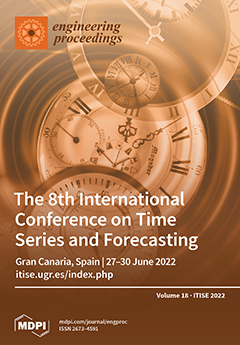Open AccessProceeding Paper
Evaluating a Recurrent Neural Network Model for Predicting Readmission to Cardiovascular ICUs Based on Clinical Time Series Data
by
Sobhan Moazemi, Sebastian Kalkhoff, Steven Kessler, Zeynep Boztoprak, Vincent Hettlich, Artur Liebrecht, Roman Bibo, Bastian Dewitz, Artur Lichtenberg, Hug Aubin and Falko Schmid
Cited by 2 | Viewed by 1469
Abstract
Unexpected readmission to intensive care units (ICUs) endangers patients’ lives due to premature patient transfers or prolonged stays at the care units. This can be mitigated by stratification of the readmission risk at discharge times using state-of-the-art machine learning (ML) methods. We fitted
[...] Read more.
Unexpected readmission to intensive care units (ICUs) endangers patients’ lives due to premature patient transfers or prolonged stays at the care units. This can be mitigated by stratification of the readmission risk at discharge times using state-of-the-art machine learning (ML) methods. We fitted two alternative recurrent neural network (RNN) models based on long short-term memory (LSTM) on the Medical Information Mart for Intensive Care (MIMIC-III) dataset and evaluated them with an independent cohort from our hospital’s ICU (UKD). The first model processed all the available time series data from each patient’s ICU stay, whereas the second model focused on the data from the last 48 hours of the ICU stay prior to transfer. Our readmission prediction on MIMIC data reached an area under the curve of receiver operating characteristic (AUC-ROC) of 0.82. Furthermore, the model with the 48 h time frame outperformed the other model, as both models were applied to the independent test cohort. The results suggest that the RNN model for time series forecasting holds promise for future use as a clinical decision support tool, although follow-up studies with larger cohorts as well as user studies should be conducted to assess the generalizability and usability of the methods, respectively.
Full article
►▼
Show Figures




